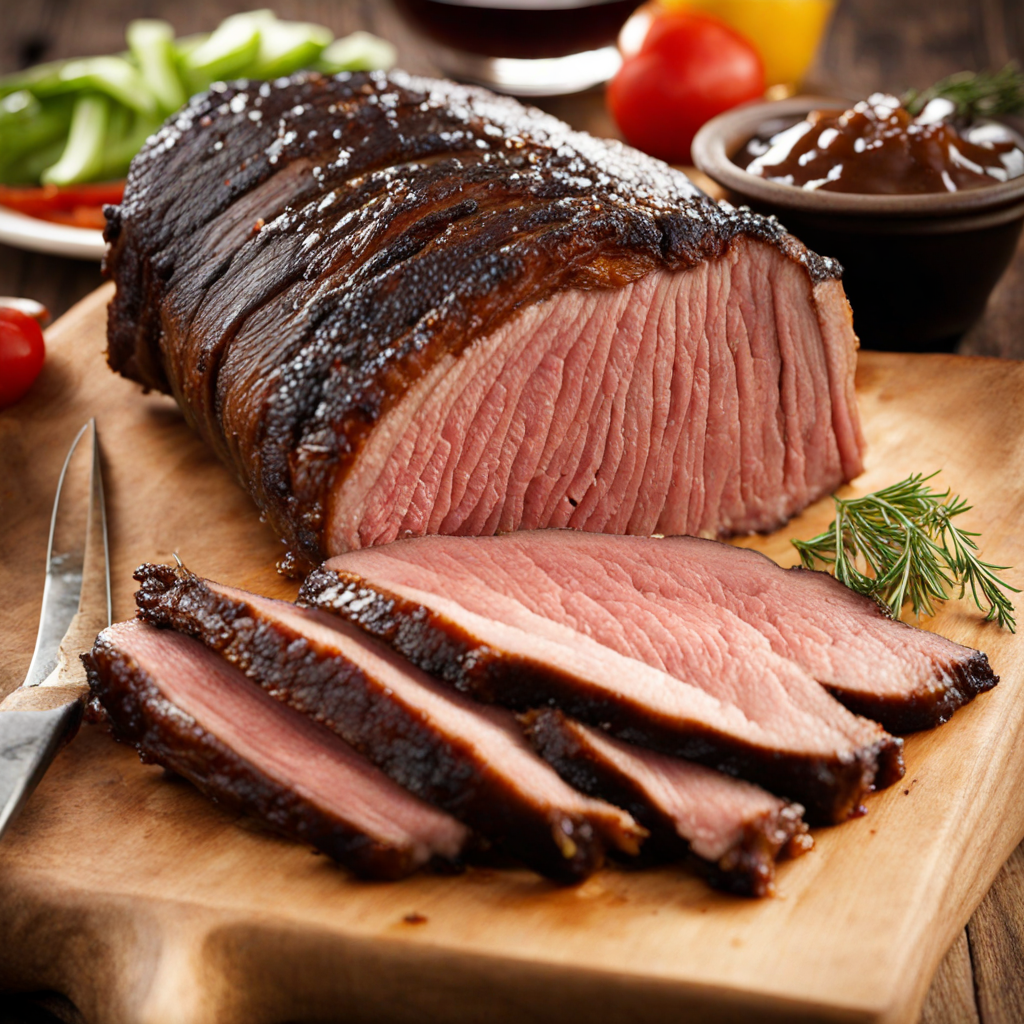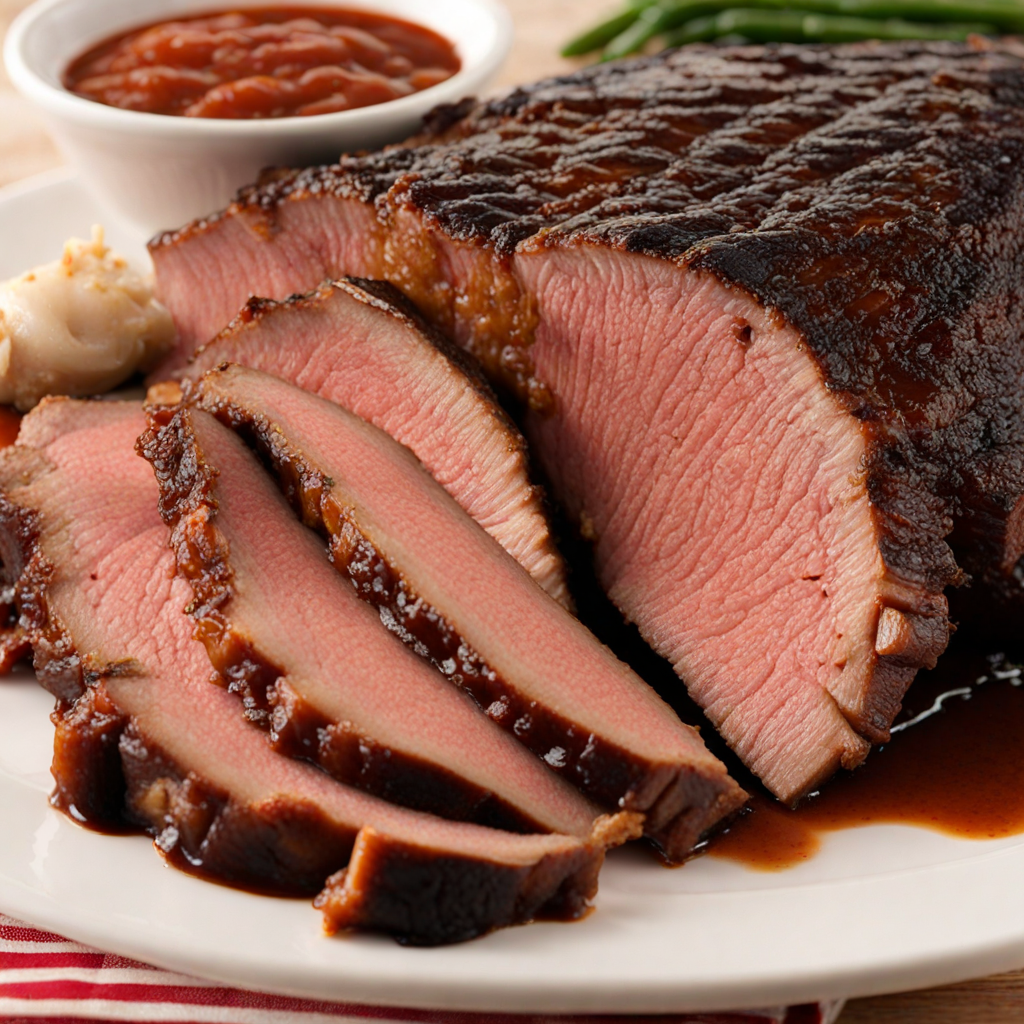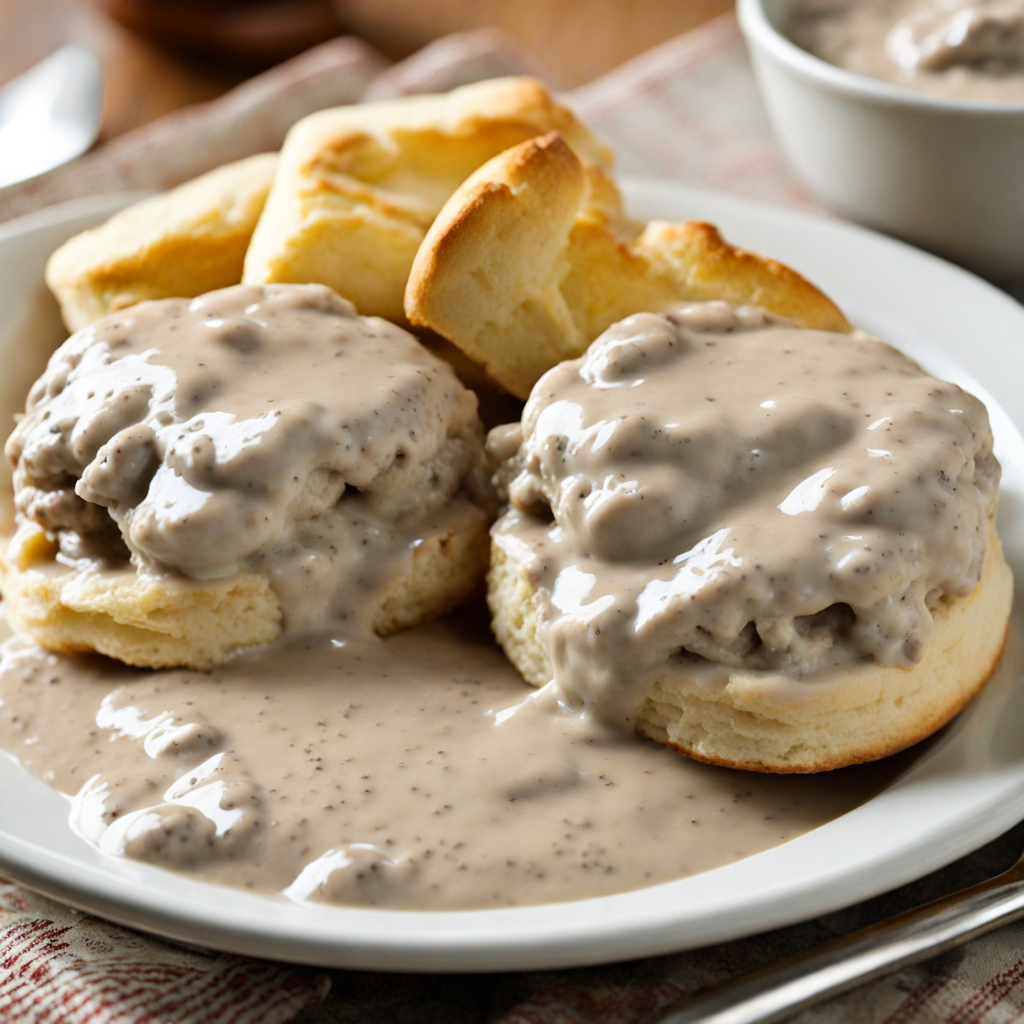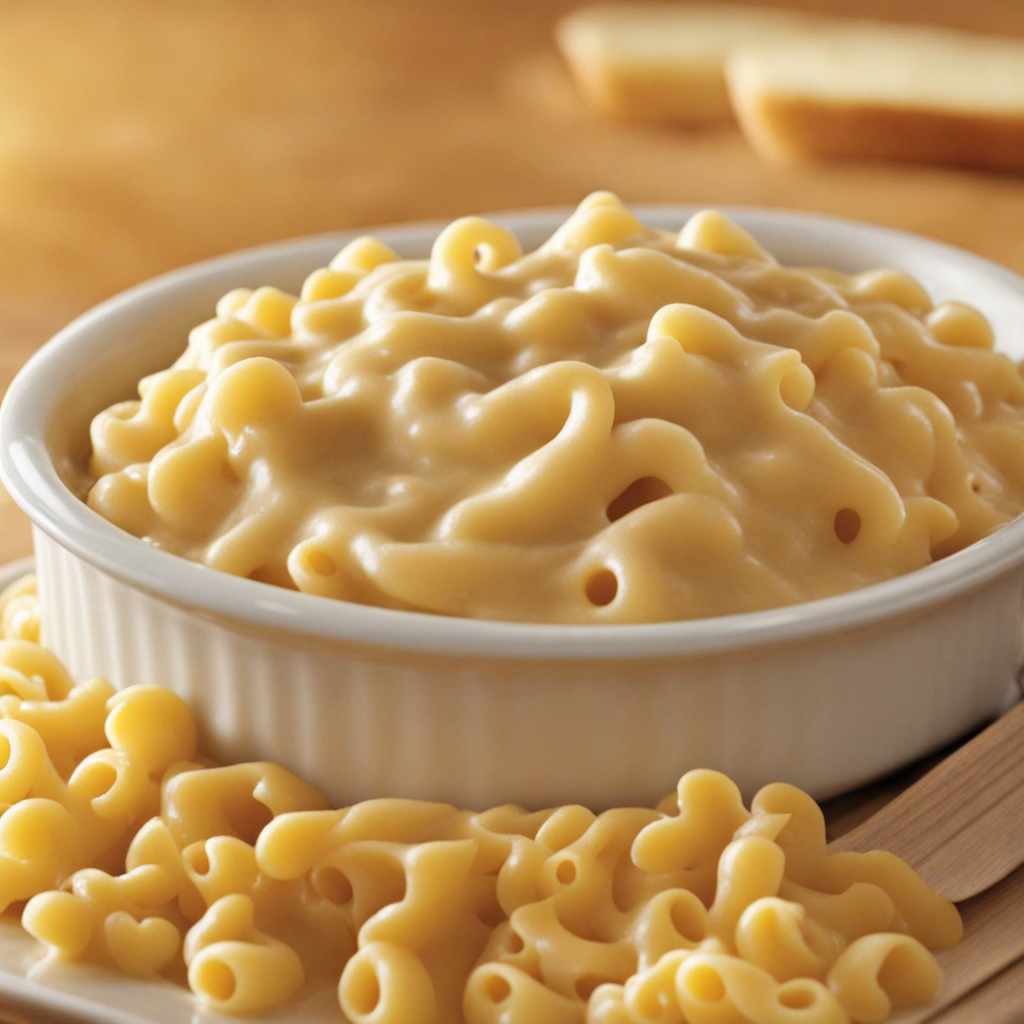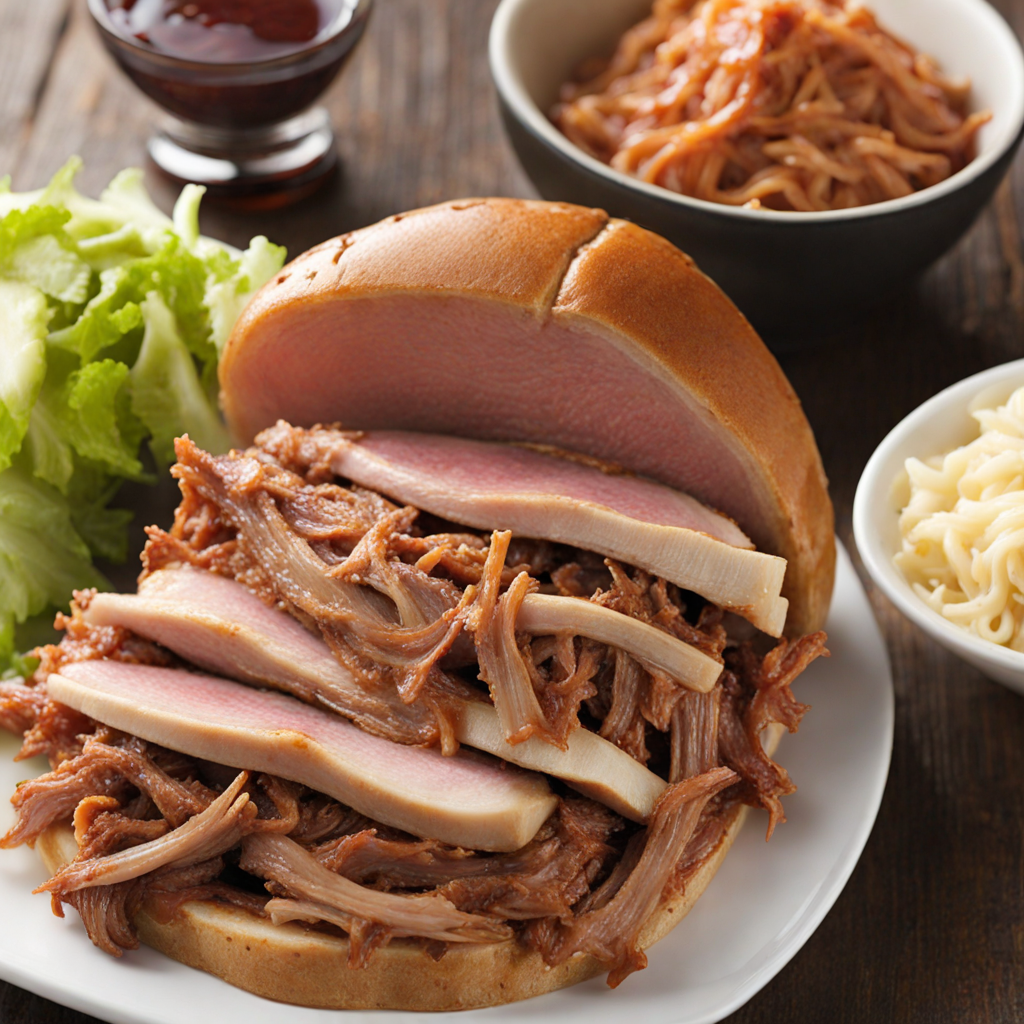Brisket
Brisket is a cut of meat that comes from the breast or lower chest of beef, and it has become a beloved staple in American cuisine, particularly in barbecue culture. This cut is known for its rich, beefy flavor and its signature tenderness when cooked properly. The preparation of brisket often involves a slow-cooking method, such as smoking or braising, which allows the tough fibers of the meat to break down and become succulent. The result is a melt-in-your-mouth experience that is both hearty and satisfying, making it a favorite for gatherings and celebrations. The magic of brisket lies in its ability to absorb flavors. Many pitmasters and home cooks alike will rub the meat with a blend of spices, commonly known as a dry rub, which can include ingredients like salt, pepper, garlic powder, and paprika. Once seasoned, the brisket is typically cooked low and slow, often for several hours, allowing the flavors to penetrate deeply and create a beautiful, caramelized crust known as the bark. When sliced, the brisket reveals a beautiful marbling of fat that enhances its flavor and juiciness, providing a delightful contrast to the smoky exterior. Brisket is often served with a variety of sides, such as coleslaw, baked beans, and cornbread, creating a hearty meal that embodies the spirit of American comfort food. It can be enjoyed as a main dish or used in sandwiches, where the tender slices are layered between bread and topped with barbecue sauce. The experience of enjoying brisket is not just about the taste; it's also about the communal atmosphere that often accompanies its preparation and serving, making it a dish that brings people together over shared flavors and stories.
How It Became This Dish
The History of Brisket in the United States Brisket, a cut of meat from the breast or lower chest of beef, holds a unique place in American culinary history. Its journey from humble beginnings to a beloved staple of barbecue culture and Jewish cuisine is a testament to the adaptability of food and the blending of cultures that characterize the United States. #### Origins of Brisket The brisket has roots that trace back to ancient times. The cut itself comes from the forequarter of the beef and is known for its toughness. In medieval Europe, particularly in the regions that would become Germany and Eastern Europe, brisket was often slow-cooked or braised to make it tender. Jewish communities in these areas embraced brisket as a traditional dish, particularly during Shabbat and holidays. The cut was both economical and satisfying, making it a popular choice for family gatherings and special occasions. #### The Journey to America As Jewish immigrants from Eastern Europe began arriving in the United States in the late 19th and early 20th centuries, they brought their culinary traditions with them. Brisket quickly became a part of Jewish American cuisine, often prepared as pot roast or braised with vegetables and served during festive meals. The dish was laden with cultural significance, representing a link to their heritage and a way to maintain traditions in a new world. Simultaneously, the brisket was also gaining popularity among non-Jewish Americans, particularly in the Southern states. The rise of barbecue culture in the U.S. during the early 20th century saw brisket take on a new role. Barbecue traditions, especially in Texas, were influenced by the blending of cultures, including that of Mexican ranchers and African American pitmasters. The slow-cooking methods developed in these communities complemented brisket’s natural toughness, transforming it into a flavorful and tender dish. #### Cultural Significance Brisket is steeped in cultural significance within Jewish tradition. It is often associated with important life events—such as weddings, bar mitzvahs, and holiday celebrations—where it serves as a centerpiece that brings families together. The way brisket is prepared varies widely among Jewish communities, with recipes passed down through generations, often featuring a combination of onions, garlic, and a variety of spices. In contrast, in the realm of American barbecue, brisket has become emblematic of Texas-style barbecue. The Texas brisket is typically seasoned with a dry rub of salt and pepper, smoked over low heat for several hours, often using oak or mesquite wood. This method of cooking has become a rite of passage for barbecue enthusiasts and pitmasters alike, with many competitions dedicated solely to the art of brisket smoking. In this context, brisket represents not just a meal but a cultural celebration, with barbecue joints and festivals becoming social hubs. #### Development Over Time As the 20th century progressed, brisket's popularity continued to grow, leading to its integration into mainstream American cuisine. The post-World War II era brought about a renewed interest in outdoor grilling and smoking, and brisket became a favored cut for backyard barbecues. Recipes evolved to include various marinades and sauces that paid homage to the regional flavors of the American South and Southwest. By the 1980s and 1990s, brisket had solidified its place in the American culinary landscape. Barbecue competitions, like the famed Memphis in May World Championship Barbecue Cooking Contest, highlighted the brisket's prominence. The rise of food television and celebrity chefs further propelled brisket into the limelight, with programs showcasing techniques for perfecting the cut and elevating it to gourmet status. #### Modern Interpretations Today, brisket has transcended its origins and is found in a variety of culinary contexts. Food trucks and upscale restaurants alike feature brisket in inventive dishes, from brisket tacos to gourmet sandwiches. The versatility of brisket has made it a favorite among chefs who appreciate its ability to absorb flavors and its capacity for creativity in presentation. Moreover, the craft beer and barbecue movement has further propelled brisket's popularity, with local breweries often collaborating with pitmasters to create pairings that highlight the meat's rich flavors. The rise of social media has also played a role, as food enthusiasts share their brisket creations, techniques, and experiences, fostering a sense of community around this beloved cut of meat. #### Conclusion Brisket’s journey from a humble, tough cut of meat to a celebrated centerpiece in both Jewish and American barbecue traditions reflects the broader narrative of American food history—a story marked by adaptation, cultural exchange, and innovation. It serves as a reminder of the connections we forge through food, the traditions we maintain, and the new paths we carve in the ever-evolving landscape of culinary culture. Whether enjoyed at a family gathering, a festive Jewish meal, or a smoky barbecue joint, brisket continues to hold a special place in the hearts and palates of many Americans, symbolizing both heritage and a shared love for good food. As we look to the future, brisket will undoubtedly evolve further, but its rich history will always remain a significant part of its identity.
You may like
Discover local flavors from United States


